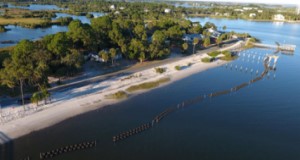Abstract
Living shorelines are structures made of natural materials such as oyster shell, sand, mangroves, salt marsh plants, and other organic materials built to protect properties from erosion. In addition to increasing shoreline stability, living shorelines enhance many valuable ecosystem functions. In this new 11-page publication of the UF/IFAS Department of Soil and Water Sciences, we provide homeowners, land managers, and Extension agents materials lists, protocols, and data sheets for measuring change in ecosystem function. Measuring and interpreting these measurements will help evaluate living shorelines projects as well as provide the foundation for monetarizing the value of these structures. Written by Laura K. Reynolds, Natalie C. Stephens, Savanna C. Barry, and Ashley R. Smyth.
https://edis.ifas.ufl.edu/ss694
Unless otherwise specified, articles published in the EDIS journal after January 1, 2024 are licensed under a Creative Commons Attribution-NonCommercial-NoDerivs 4.0 International (CC BY-NC-ND 4.0) license.

